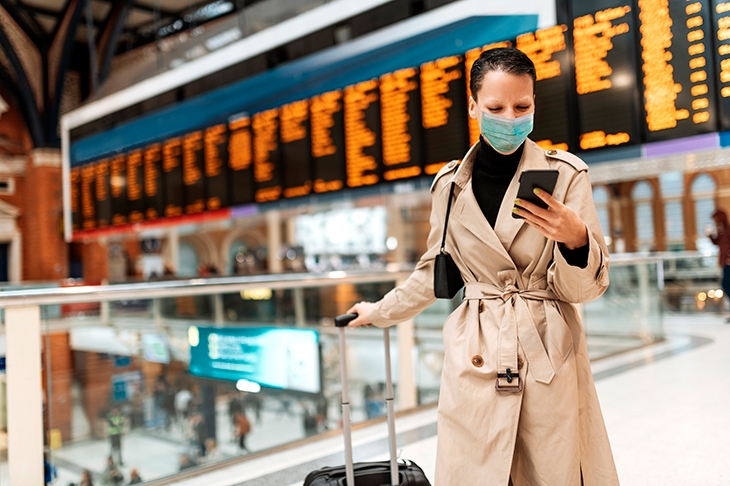Good riddance to the passenger rail franchise system which has finally been killed off by Covid, though a majority of the travelling public might say it should long ago have been put out of its — and, more pertinently, their — misery. The complex scheme to privatise British Rail launched by the Major government in 1993 defied those who said it couldn’t be done and was designed by the Treasury to maximise proceeds to itself. In doing so, it fractured the industry into a myriad of separate owners, operators and service providers that rarely worked in harmony or created competition for the benefit of users.
The consequences of this structural fiasco were as random as they were unsatisfactory. Unintended fortunes were conferred on owners of obscure rolling-stock leasing companies. Railtrack, the company created to own lines, land and stations, was confiscated by the Labour government. The whole system was perpetually hobbled by contract disputes. As for franchisees, the rule — I wrote a long time ago — seemed to be that ‘the more your passengers like you, the less likely you are to survive’. The best, GNER on the East Coast main line, was one of the first to fail. The Wrexham & Shropshire service from Marylebone, loved by those who discovered it, was barged out by bigger players in less than three years.
And vice versa: in an example of how capitalism really isn’t supposed to work, if you were managing to extract profits from this flawed system, the more likely it was that travellers — especially southern commuters — hated you with a passion. Some struggling franchisees simply handed back their contracts while others were belatedly sacked for incompetence. Large parts of the system ended up owned not by private investors but by foreign taxpayers through German, French and even Chinese state rail companies. Fares rose inexorably as punctuality stumbled.
The fact that passenger numbers doubled while all this was going on is no real indication of how much better it might have been if it had been done differently. Road congestion and rising house prices forcing -longer commutes also had a lot to do with the trend. But now, with passenger numbers at a third of pre-pandemic levels, remaining train operators will earn fixed fees until March 2022, while the government bears losses across the network of £500 million a month.
Keith Williams, the former British Airways executive whose report on the future of the railways has been delayed by the pandemic, says he hopes this interim scheme will ‘kickstart a process of reform’ that will one day provide fit-for-purpose rail. My own prediction is that what we have now is what we’ll have for a minimum of a decade. At least we can be sure that by the time ministers and civil servants start thinking seriously about trains again, the team that came up with the Treasury’s terrible 1993 blueprint will all have long retired.
Still chasing rainbows
‘Snowflake’ is modern slang for an -overly entitled young person who’s too easily offended by opposing opinions — so not a name I would have chosen for a cloud-based data-warehousing venture from which I hoped to make my fortune. But it has done no harm to early investors in Snowflake Inc of San Mateo, California, who watched their shares soar from a float price of $120 to trade above $250 when Goldman Sachs brought the company to market in New York last week. The resulting $70 billion valuation — at 140 times the company’s current annualised revenues and despite losses of $171 million in the six months to July — -matches the wildest follies of the dotcom boom of 20 years ago. It tells us that despite the growing pandemic gloom that caused global stock markets to dive at the beginning of this week, digital investors are still willing to chase rainbows promising pots of gold.
We see relatively little of that over here, of course, because — as I’ve written in the context of the sale of the homegrown chip designer Arm Holdings — we lack a critical mass of digital ventures. An exception to watch this week was the Hut Group, a Manchester-based online health and beauty retailer which became the UK’s biggest flotation since 2017 by raising just £1.9 billion, hardly in the Snowflake league.
Meanwhile, the only indication that the Californian debutante might turn out to be a long-term winner in the fast-evolving field of cloud technology — rather than a short-term winner as a gambling chip — is that one of its backers is the wily old master investor Warren Buffett. Opinion differs as to whether the pricing of its initial public offering was a cock-up, a Wall Street scam or a grand success. On balance, I’ll go with this judgment from the TechCrunch website: ‘Are IPOs perfect? Hell no. Are bankers out for their own good? Yes. But that doesn’t mean Snowflake screwed up.’
Undying drama
I’m thrilled that Succession, the HBO television series about media titan Logan Roy and his dysfunctional offspring, won this year’s top Emmy Award for drama. As a depiction of corporate chicanery, its hilariously heightened reality held me gripped through many evenings of lockdown. Critics agree that it draws on King Lear and most think it’s a caricature of Rupert Murdoch and his heirs — though the show’s British creator Jesse Armstrong insisted from the start ‘it really isn’t’ — and what fascinates me is the number of other big business beasts it could equally well have been based on.
Here are two who died recently and might provide inspiration for Armstrong’s next series. Stanley Ho, the ballroom-dancingcasino king of Macau, fathered 17 children by four consorts, several of whom tussled for control of his empire after he was incapacitated. And the monstrous, priapic Sumner Redstone, owner of CBS and Paramount studios, was horribly disfigured in a hotel fire but when he was past 90 declared: ‘I will not discuss succession. You know why? I’m not going to die.’







Comments